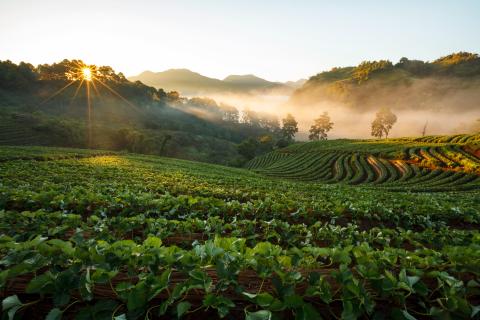
Agriculture is big business, especially in a rural state like VT. As the world population increases, farmers need to maximize the output from their fields while minimizing expenses, such as water, fertilizer and pesticides. There’s only so much arable land in the world, after all!
One method farmers have turned to in recent years is electronic crop mapping. Typically, this involves flying a helicopter or drone with a camera back and forth across a field and imaging the landscape below using a set of specialized optical filters to give contrast in the images. If they are technologically adept, farmers can set up their own systems, buy integrated systems with analytics software, or have their crops monitored as a service, periodically receiving an electronic report via email or phone app.
As described above, the camera systems typically use several filters to overlay several images which are then analyzed using one or more of >100 different methods (https://doi.org/10.1155/2017/1353691). These include Vegetation Indices that monitor plant vigor and growth dynamics, algorithms that describe water and respiration, disease states, insect damage and artificial intelligence routines that analyze all of these items simultaneously. These methods perform mathematical operations on combinations of the individual images to determine the parameters of interest. For instance, the ratio of images taken with a red filter and a near-infrared filter results in a “Ratio Vegetation Index” image used to estimate high-density vegetation coverage. Brighter areas in the “ratio” image have a higher ratio, and dark areas have a lower ratio.
For the most reproducible and reliable results, the camera systems require careful calibration during each mapping flight to account for changes in lighting condition, plant type, haze or dust in the air, etc. The filters, cut to the size of each camera, need to be tough, be able to work repeatedly in a range of temperatures and humidity conditions, work over the field-of-view of interest and be able to survive an occasional drone crash. The blocking of light at unwanted wavelengths (or colors) should be designed to maximize contrast for the desired analytical method.
Omega is a leader in supplying filters for these applications. Our hard-oxide PARMS coatings are the ultimate in durability. We help tailor the size and spectral requirements to your particular situation and algorithm, giving you minimum complexity with maximum performance.
